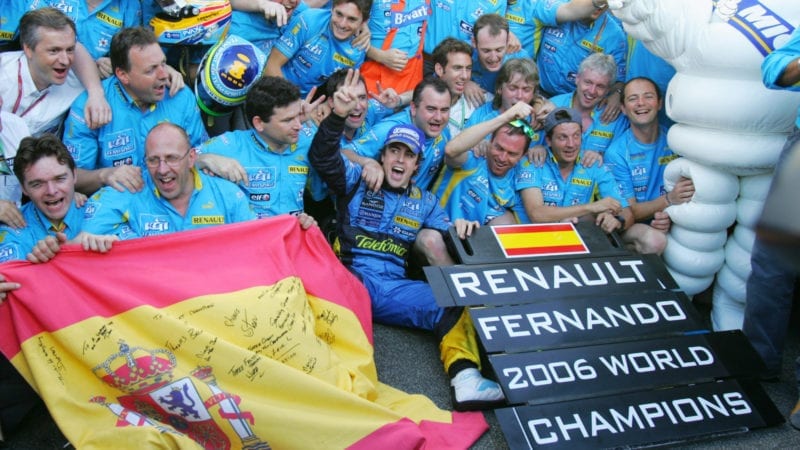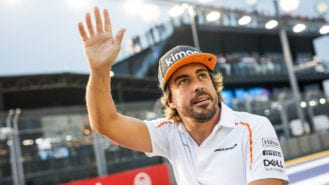“I thought, ‘Wow, this guy is something different.’ He was both faster and more consistent than our number one driver of the time [Giancarlo Fisichella] and I phoned Flavio that night, telling him this guy was pretty special.”
It wasn’t until 2003 though that he’d secure a race seat with the team as Jenson Button continued to underperform in 2002. It was Alonso that got the nod to replace him for the following season alongside Jarno Trulli and it didn’t take long for him to snatch the spotlight.
In what was just his second start for the team, he took pole position at the 2003 Malaysian Grand Prix to become F1’s youngest pole-sitter at 21 years and 236 days old. He claimed three podium finishes in the first five rounds of the season before he made history once more, at the Hungarian Grand Prix.
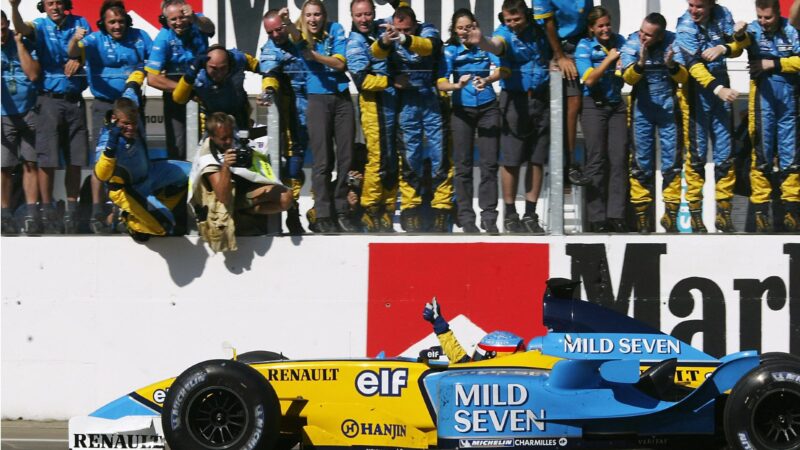
Win number one for Alonso came at the 2003 Hungarian GP
ATTILA KISBENEDEK/AFP via Getty Images
The clips of Alonso lapping Michael Schumacher on the way to becoming F1’s then-youngest ever race winner make the highlight reel in what would turn into a truly great career. The victory was a watershed moment.
The subsequent ’04 season included no further race wins but that changed in 2005 as the new tyre regulations, preventing pit stops as a measure to halt Ferrari’s dominance, certainly did just that.
Alonso didn’t finish off the podium until round six of the season at Monaco, taking three race victories in that spell including a mesmerising battle with Schumacher at San Marino.
For 12 laps of heart-pounding racing, the Renault driver held the seven-time champion at bay to win the race by just two-tenths of a second under immeasurable pressure.
Seven race wins and six pole positions was enough for Alonso to become F1’s youngest world champion in history, eclipsing the record set by Emerson Fittipaldi in 1972. It was also the Enstone team’s first world title double since the 1995 season.
“Alonso is very worthy and will be a good world champion. It’s nice that he’s won it by being the best driver over the year and of course it’s amazing to see someone do it so young,” was Sir Stirling Moss’ assessment of the new world champion. “Fernando’s a racer who doesn’t give up.”
2006 and the Spaniard became the eighth driver in F1 history to successfully retain a title, showing that same tenacity to go head-to-head and beat Schumacher by 13 points with seven wins apiece.
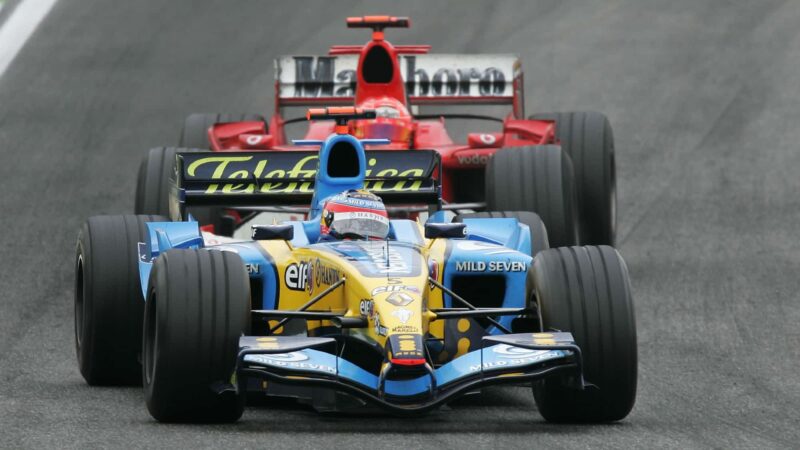
A nail-biting finish at the San Marino GP in 2005 was won by Alonso
Clive Mason/Getty Images
An engine failure for the Ferrari driver at the penultimate round in Japan while leading with 17 laps remaining all but ended his title hopes. It left Alonso requiring just a single point in Brazil to confirm his second crown, which he duly did, finishing runner-up to Felipe Massa.
The title was secured in the knowledge that it was his final season with Renault before a move to McLaren in ’07, in what turned out to be a brief interlude.
The arrival of Lewis Hamilton in F1 and the ensuing chaos that unravelled at Woking that year had Alonso searching for a new home but as doors shut at BMW Sauber and Ferrari, Renault was there to welcome him back with open arms.
It was not the fairytale reunion either might have hoped for though. The uncompetitive RS27 was a world apart from its title-winning predecessors, and he finished a distant fifth in the championship.
It wasn’t a wholly unsuccessful season though, as the team did claim victory in Singapore. A perfectly-timed safety car netted Alonso the lead which he then never relinquished.
In what became known as “crashgate” it emerged that Renault had conspired to fix the race and instructed team-mate Nelson Piquet Jr to deliberately crash to bring out the safety car and aid Alonso’s strategy.
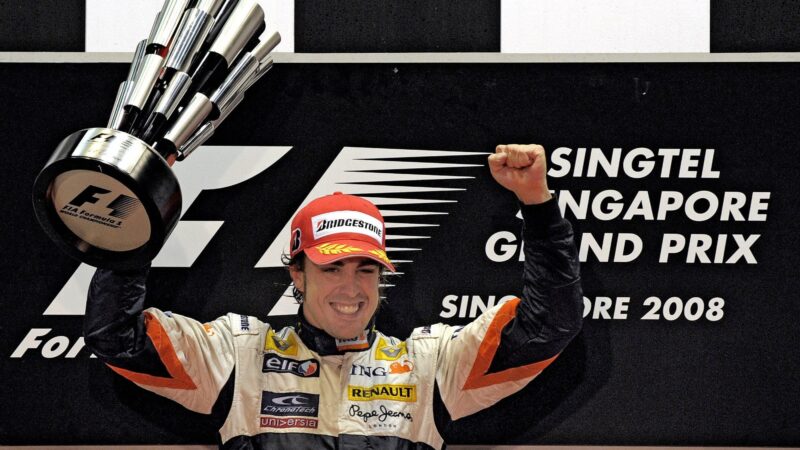
A tainted win – Alonso’s 08 Singapore win became known as “crashgate”
SAEED KHAN/AFP via Getty Images
It tarnished the team as sanctions followed in 2009, a suspended disqualification from F1 handed out while Briatore and Symonds left the team, though Alonso was cleared of any wrong-doing.
That season, the team fared no better with just a single podium finish for Alonso the best result of that year, coming at Singapore of all places. With no double-diffuser, the R29 languished well away from the leading pace and the team slipped to eighth in the constructors’ standings. Alonso recorded his worst F1 season since his Minardi days.
With that, it was off to Ferrari for what turned out to be his final real chance of adding to his championship tally before ‘retirement’ from F1 with McLaren in 2018.
And so, at age 38 Alonso has announced he will return to Renault one final time. He will be 39 by the time he drives the R.S.20 in anger.
Can he make the difference as the French outfit continues to struggle in its efforts to reach the top of the F1 mountain? Should any title success materialise, he would be the oldest champion since Damon Hill took his sole title in 1996, and Alonso would slot in as the fourth oldest F1 champion of all time.
He is certainly one of the most talented drivers to step into a Formula 1 car and his haul of (just) two titles arguably speak more to his burning of bridges out of the car than his ability in it. He has already shown his ability to squeeze the maximum performance out of the range of cars he’s driven.
“He was well very suited to that [2005-06] era of sprints because he was so relentless. But don’t under-estimate his ability to adapt. In the right car he could still win titles,” Symonds recalled in his interview.
It might take the same tenacity and adaptability to restore Renault to championship standard and finally secure a third F1 title.
